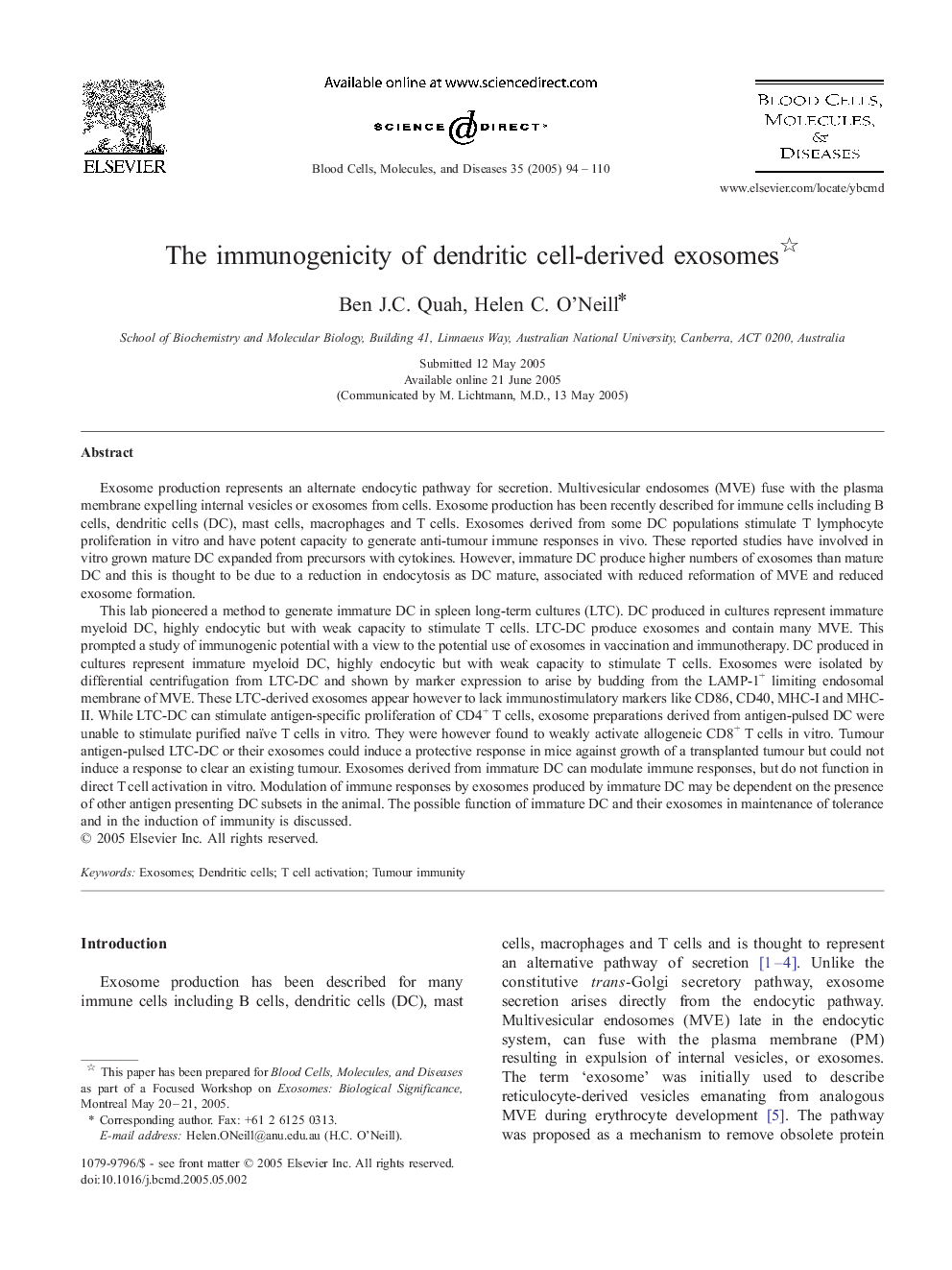| کد مقاله | کد نشریه | سال انتشار | مقاله انگلیسی | نسخه تمام متن |
|---|---|---|---|---|
| 9137530 | 1162483 | 2005 | 17 صفحه PDF | دانلود رایگان |
عنوان انگلیسی مقاله ISI
The immunogenicity of dendritic cell-derived exosomes
دانلود مقاله + سفارش ترجمه
دانلود مقاله ISI انگلیسی
رایگان برای ایرانیان
کلمات کلیدی
موضوعات مرتبط
علوم زیستی و بیوفناوری
بیوشیمی، ژنتیک و زیست شناسی مولکولی
زیست شناسی مولکولی
پیش نمایش صفحه اول مقاله

چکیده انگلیسی
This lab pioneered a method to generate immature DC in spleen long-term cultures (LTC). DC produced in cultures represent immature myeloid DC, highly endocytic but with weak capacity to stimulate T cells. LTC-DC produce exosomes and contain many MVE. This prompted a study of immunogenic potential with a view to the potential use of exosomes in vaccination and immunotherapy. DC produced in cultures represent immature myeloid DC, highly endocytic but with weak capacity to stimulate T cells. Exosomes were isolated by differential centrifugation from LTC-DC and shown by marker expression to arise by budding from the LAMP-1+ limiting endosomal membrane of MVE. These LTC-derived exosomes appear however to lack immunostimulatory markers like CD86, CD40, MHC-I and MHC-II. While LTC-DC can stimulate antigen-specific proliferation of CD4+ T cells, exosome preparations derived from antigen-pulsed DC were unable to stimulate purified naïve T cells in vitro. They were however found to weakly activate allogeneic CD8+ T cells in vitro. Tumour antigen-pulsed LTC-DC or their exosomes could induce a protective response in mice against growth of a transplanted tumour but could not induce a response to clear an existing tumour. Exosomes derived from immature DC can modulate immune responses, but do not function in direct T cell activation in vitro. Modulation of immune responses by exosomes produced by immature DC may be dependent on the presence of other antigen presenting DC subsets in the animal. The possible function of immature DC and their exosomes in maintenance of tolerance and in the induction of immunity is discussed.
ناشر
Database: Elsevier - ScienceDirect (ساینس دایرکت)
Journal: Blood Cells, Molecules, and Diseases - Volume 35, Issue 2, SeptemberâOctober 2005, Pages 94-110
Journal: Blood Cells, Molecules, and Diseases - Volume 35, Issue 2, SeptemberâOctober 2005, Pages 94-110
نویسندگان
Ben J.C. Quah, Helen C. O'Neill,